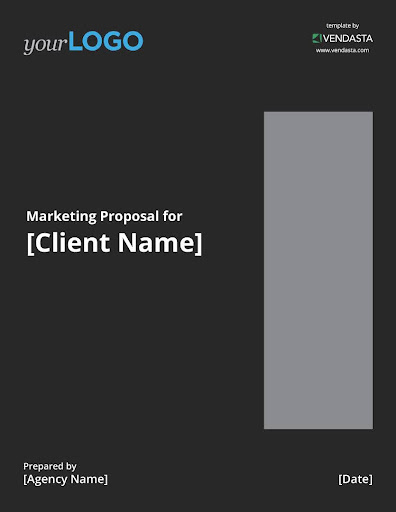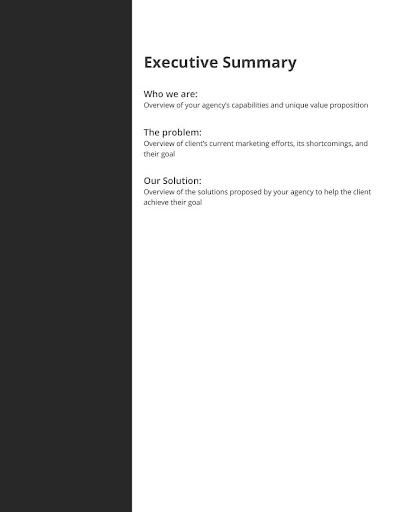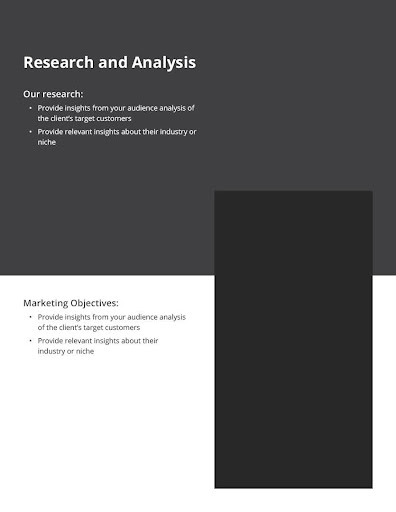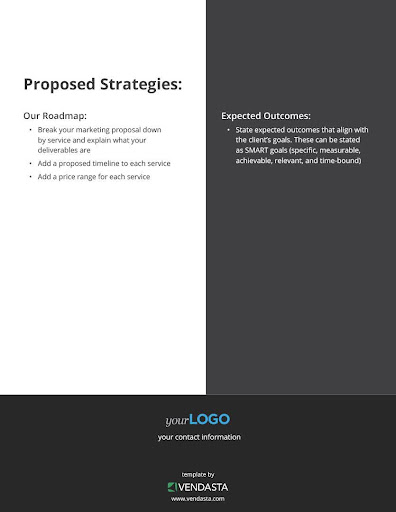Create a Marketing Proposal That Seals the Deal (with Free Template)
Digital marketing is a major expense for small and medium-sized businesses (SMBs). If you want them to spend those dollars with your marketing company, you need to be persuasive. That’s where marketing proposals can come in handy. This document plays a key role in negotiating and closing deals by summarizing the work your agency proposes to do to achieve the client’s goals.
Launch a revenue-generating cloud marketplace in minutes, not years: Get a demo to start selling more products today.
Whether you’re starting your business or ready to grow your agency by closing more deals with the power of a great marketing proposal, stick around: this blog is for you.
What is a marketing proposal?
A marketing proposal is a widely used document used by all types of agencies, from boutique organizations to marketing consulting firms, outlining strategies, tactics, and recommendations to promote a client’s product, service, or brand.
Digital marketing is complex, with many moving parts that can be implemented together to deliver the best results for your client, from search engine optimization (SEO) and pay-per-click advertising (PPC) to social media management and website creation. Whether your agency specializes in just one facet of digital marketing or you’re a full-service provider that can handle it all, a proposal can serve as a roadmap of what you’ll do to achieve a client’s marketing goals.
Marketing proposals are based on information gathered about the client’s niche, positioning, and goals. These details are used to determine the most appropriate solutions available through your agency, and a strategy or blueprint for how they’ll be used. Prospects may already have an idea of what the contents of a proposal will be when they receive it based on past communications with your agency, but a formal document ties everything together and focuses on the strategic piece.
The purpose of a marketing proposal
The purpose of a proposal is to persuade prospects to become paying clients of your digital agency. This document isn’t the place to take a broad brush and pitch everything your agency offers. If you’ve reached the proposal stage, you’ve likely done that already, particularly when working with larger clients. Instead, proposals are typically used later on in the sales cycle, after you’ve collected information about a prospect’s industry, pain points, and goals. This is where those marketing agency startup costs pay off by converting prospects into customers.
When crafting the perfect, persuasive marketing proposal, the aim should be to convince potential clients that investing their marketing budget with your digital agency is a smart move.
In practical terms, the proposal is where you lay out the specifics—how your approach adds value and benefits the client more than going with the competition.
By creating a marketing agency strategy and walking prospects through the roadmap of precisely how you intend to help them achieve their goals, you make it easy for decision-makers, agency partners, and stakeholders to imagine themselves as your collaborator. By reading your proposal, they can see how their lives will be easier, and their business more successful, by working with you.
When to use a marketing proposal
Given that marketing proposals are meant to persuade and show strategic thinking, they can be used whenever there’s a need to communicate and gain approval for marketing strategies. Digital agencies often have to do this, so let’s take a look at the most common scenarios where you’ll use this document in your business.
1. Pitching solutions to potential clients
When engaging prospective new clients and working to close a deal, a well-structured proposal formalizes previous research or conversations and synthesizes them in a strategic roadmap, providing customers with an easy-to-understand plan of action. Sharing a proposal underscores your comprehension of their needs but illustrates how your agency’s approach will yield meaningful results.
2. Seeking funding for marketing campaigns
Marketing requires constant investment, so previous agreements regularly need to be revisited and revised based on client budgets and market feedback. When seeking the go-ahead on a new campaign, a proposal provides an overview of the proposed work to be done. It also delineates budget allocations, anticipates return on investment (ROI), and articulates the strategic thinking behind the campaign. Even with established clients, presenting a compelling case for future work continues to be important for maintaining your professional relationship.
3. Presenting new marketing initiatives to internal stakeholders
If you’re a digital agency startup, you may not have a huge internal team just yet. But as you grow your business, you might add staff in a variety of agency roles. Your digital marketers, creatives, analysts, and others all have expertise that can help you deliver better campaigns, and involving them in decision-making can improve your agency’s outcomes. Using marketing proposals to pitch new initiatives internally can be an effective way to secure stakeholder buy-in from larger teams. Just like client-facing proposals, these can be used as communication tools to convey the thinking behind what you’re proposing.
What to include in a marketing proposal
Marketing proposals follow a basic structure, but you can tailor yours to the specific needs of your audience. Here are the main components to consider including, in the order they should appear:
- Executive summary: Being with a succinct summary outlining the key points of your proposal. This is only a high-level snapshot, you’ll get into the specifics later.
- Target audience analysis: Demonstrate that you’ve done your research by providing an analysis of the target audience. You might include their demographics, psychographics, and ideal customer profiles in this section.
- Marketing objectives: Outline the goals your blueprint is designed to achieve. This could be boosting brand awareness, driving sales, or enhancing online presence: whatever your objectives, make them specific and measurable.
- Proposed strategies: Lay out the core strategies you propose to put into action. Outline the actionable steps you intend to take and include your rationalization for your strategies.
- Budget allocation: Since the goal of a proposal is to secure buy-in from your clients, financial information is important. Break down the budget allocation for your strategy, emphasizing the target ROI. Make sure this is realistically aligned with your client’s budget. Consider including several pricing package options.
- Timeline: Provide a realistic timeline for the implementation of your plan. This establishes expectations and puts your agency and the client on the same page.
- Expected outcomes: Wrap up by forecasting the expected outcomes. Show how your proposed strategies translate into bottom-line results for the client, reinforcing the value and expertise your agency brings.
How to assemble a marketing proposal
No matter how detailed your proposal is, the steps required to put it together follow a familiar formula. Follow this roadmap to create your next proposal.
1. Conduct market research
Since marketing proposals require information about the client, their audience, their goals, and their industry, market research is a non-negotiable step. This sets the foundation for a proposal that realistically aligns with the market and can deliver results for clients.
It’s worth noting that exhaustive market research may not be practical for every client: if you’re a small team working with a white-label digital marketing agency and delivering marketing services to thousands of SMBs, it may be more realistic to craft several proposals that can be reused for clients depending on their characteristics. However, if you’re pursuing a big-ticket client, a completely bespoke proposal is a must.
2. Developing your agency’s unique value proposition (UVP)
What does your agency offer that can’t be found elsewhere? Clearly articulate how your agency is uniquely poised to help your clients meet their goals by addressing their needs and pain points. Agency networking can help you scope the competition to better define your positioning. Doing this step will help you avoid the common agency challenge of differentiating yourself.
3. Creating a detailed marketing plan
Transition into the core of your proposal: building a detailed digital marketing strategy. Outline what you intend to do following the outline in the previous section.
4. Present a professional, visually appealing proposal
Ensure your proposal is professional-looking, neat, and easy to read. Using your agency’s branding throughout will also convey trust and credibility.
Free marketing proposal template
You don’t have to start with a blank screen. Download this template to get started on the creation of your proposal faster, even if you’re beginning with no experience. Starting with a template will ensure you include all the necessary information in your marketing proposal, and customizing it will make it fully representative of your brand.
Here’s how to use it:
- Customize the sections if needed: determine if there are any you’d like to add or remove.
- Complete the sections with information based on your market research and the specifics of the services you offer.
- Update the fonts to match your agency’s typography standards.
- Replace the logo placeholder with your agency’s logo.
Download the template here or check out this video about using Vendasta’s Proposal Builder:
Tips for Writing an Effective Marketing Proposal
Crafting a proposal that's straightforward, persuasive, and supported by data enhances your chances of securing client buy-in. Whether you use our template or create your marketing proposal from scratch, these tips will help you craft an effective, persuasive document every time:
- Concision is key: Remember, your clients may not be experienced marketers. Keep your language clear and concise, avoiding unnecessary jargon.
- Aim to persuade: Use compelling and persuasive language to drive your points home. You’re trying to sell a buyer on your services, so make it easy for them to understand the perks of working with your agency.
- Support with data and case studies: Want to take your proposal to the next level? Strengthen it with data or case studies.
- Address potential objections: You’ll likely encounter the same objections time and again from clients, so be proactive by addressing them in advance. You can include this in the body of your proposal in an FAQ section.






